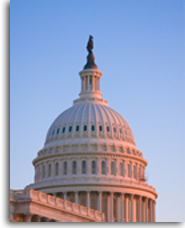Four days out from Election Day, there’s not a lot of drama to the presidential race. The national tracking polls are relatively stable, with maybe a slight drift towards McCain. Only outliers (yesterday, “traditional” Gallup and Zogby, and today, Fox) have the race close to the margin of error. The state polls consistently show Obama with a comfortable electoral vote lead. Among conservative opinion-leaders, the mood is subtly shifting from the desparate search for evidence that McCain’s steadily closing the gap, to self-consolation that he’s kept the race relatively close despite all his disadvantages.
But as Ezra Klein noted yesterday, there’s a feeling of anxiety among many Democratic gabbers and activists right now that something could go terribly wrong next Tuesday. Ezra suggests there’s not much evidence to support such fears, and that even if McCain winds up doing exceptionally well among undecided voters, he’s probably too far behind to close the deal.
I’d argue that aside from congenital and well-earned Democratic pessimism based on past close elections, there may be two factor underlying this anxiety. The first is obvious enough: race. With the McCain campaign heavily relying on submerged and not-so-submerged racial appeals, old fears about the willingness of white Americans to elect an African-American president have bubbled up.
The second factor is more subtle: personal emotional investment in Obama. Some Democrats have long considered Obama a phenomenal, once-in-a-generation leader who can be “transformational;” others have reached this conclusion more recently. Still others simply think it’s imperative, in an unprecedented way, that the GOP lock on the White House is terminated this year, for reasons ranging from Supreme Court appointments to foreign policy.
That hasn’t always been the case. I can say from personal experience that I’ve only had a strong emotional, as opposed to professional or ideological, investment in the outcome of two presidential elections: 1992 and 2004. And those two Election Nights represented the ultimate highs and lows.
In 1992, I had the ineffable joy of sitting in Atlanta’s premier political watering hole, Manuel’s Tavern, surrounded by members of a class I was teaching, as Georgia was called for Bill Clinton about two minutes after the polls closed. In 2004, the bad news came to me in the form of a wee-hours conversation with a friend of mine who was working for John Kerry in Florida, and told me: “We’re done in Florida, and we’re done nationally,” finally dashing the illusions born of faulty exit polls.
Other Democrats have had similar experiences, more negative than positive, usually. Many were more wrenched by the endless and ultimately maddening drama of 2000 than with the near-miss of 2004. But virtually all of us seem transfixed by this year’s election, and what it might portend. That can produce anxiety, which will only be relieved when all the votes are in, and we–that’s how most of us feel about it–have prevailed.




McCain has pulled even/slightly ahead in VA in one day.
He has knocked Obama’s lead in PA from 12 to 6. in one day.
North Dakota and Montana went from being tossup states, to Leaning McCain, in one day.
Barack Obama will be defeated…in ONE DAY……………….
mmanphd:
You may have noticed that I did a later post on the imperative for election reform. “Faulty exit polls” did indeed exist in 2004, and ex post facto concerns about election day abuses don’t change results. We need proactive legislation the minute this election is over.
Ed Kilgore
I respect the serious thought, intelligence, and experience exhibited at this site. Perhaps that is why I find your allusion to ‘the illusions born of faulty exit polls’ so discouraging.
There was nothing wrong with the exit polls in Florida in 2000 (and Ohio in 2004?). They were an accurate sample of the ‘will of the voters’. In Florida, a majority of voters left the voting booth thinking and saying they had voted for Gore. But the official count moved the votes to Buchanan, or lost them to overvotes, butterfly ballots, and hanging chads. A vibrant democracy requires that every voter have access to the polls without fear or favor, and every vote must be counted. It is beyond the capability or is not the intent of many states and localities to allow much less encourage all citizens to vote. Once in power, Democrats must make democratic voting one of our first priorities through reform of the electoral process. Writing about ‘faulty exit polls’ rather than ‘anti-democratic voting officals and procedures’ is factually false. Worse, it is politically misdirected. If we want to live in a democratic country where every citizen has an equal voice in self government, we MUST reform the voting process not the exit polls. Democrats need democratic reform to be a key part of the first One Hundred Days. Democracy is a more important issue than health care.
Well, the other deep concern has been the possibility of coordinated efforts to either create panic (i.e. fabricated last-minute terrorist threats) or massively disenfranchise Democratic voters. Although diminished, these threats will linger until election day.
These were and are not idle fears. That they have not come to pass probably has more to do with the Bush Administration and the Right’s ambivalence toward McCain than any sudden improvement in their ethical standards since 2004. Had Dick Cheney been running for president we might very well be right now be putting out the flames of our own modern-day Reichstag fire. One need only visualize the “everything goes” attitude that the Administration exhibited in manipulating the nation into the war in Iraq applied to the current election.